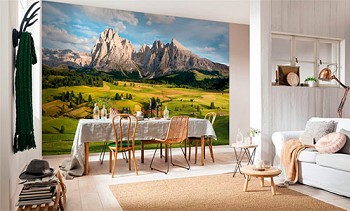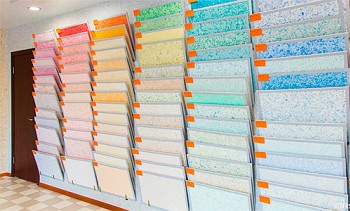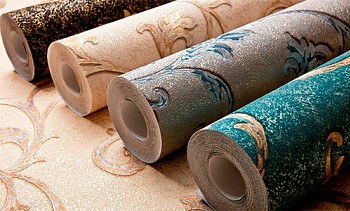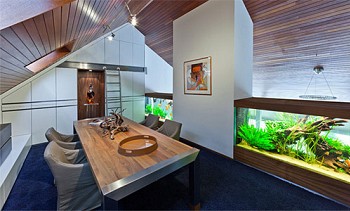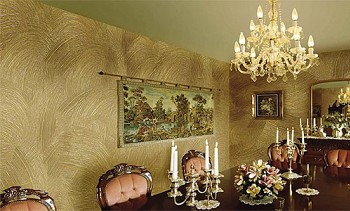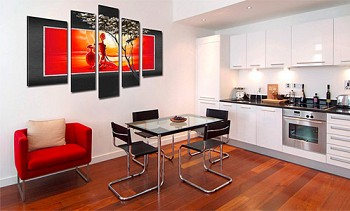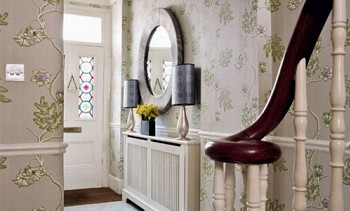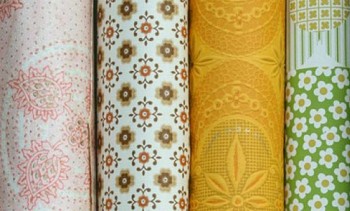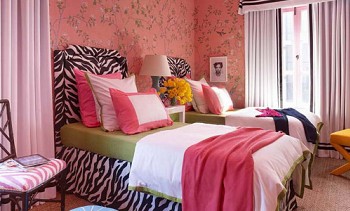The combination of wallpaper in the interior - original methods and techniques
The combination of wallpaper in the interior of the room allows you to achieve originality and dynamism. It must be said here that if before the combination of wallpaper in the interior was a curiosity, now no one is surprised at this. And most designers try to use a combination of wallpaper to create a unique interior.
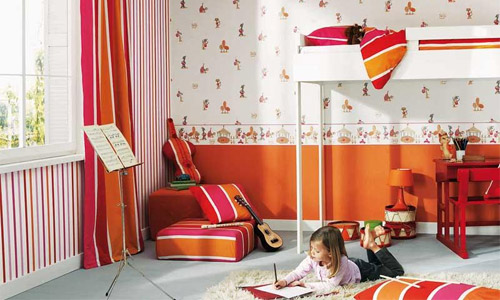
Content:
This trend did not go unnoticed by the manufacturers of wallpaper, so they are trying to create such wallpapers that have several paintings that are compatible with each other on the canvas.
Be that as it may, but people continue to be interested in a combination of different wallpapers when decorating the interior. Therefore, it is proposed to consider those combination methods that currently exist.
Combination Rules and Tasks
If a person begins to think about whether to glue the same wallpaper to him in the room, or to combine wallpapers of various colors and with different drawings, then most modern designers are inclined to use the second option. The fact is that if you resort to this method of decorating the room, then, you can not only create different decorative effects in the room, but also visually change the size and area of this room. And also try to zone it. It is often possible to even hide the flaws of the room and highlight its advantages.
How to highlight advantages and remove disadvantages?
If using a pattern or coloring of wallpaper different from the pattern (coloring) of the main wallpaper, a certain place in the room, then we can make it the "main" place, which will linger. Moreover - with this method, when people’s gaze lingers on one place, it is possible to distract their attention from the possible shortcomings of the room. For example, from chipping plaster on the walls or ceiling. And here the rule works that the brighter the pattern of "distracting" wallpapers, the less likely people will notice the imperfections of the room.
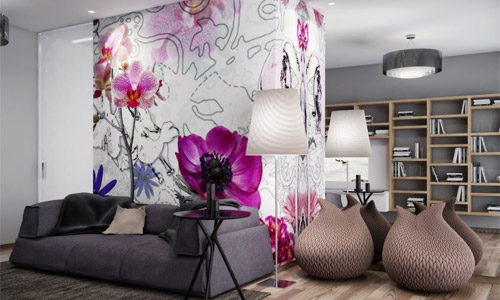
Highlighting and focusing on the ledge of the wall.
Photos - creativehomeidea.com
Room Zoning
Sometimes it is necessary to make zones in the same room that perform various functions. There can be several ways to organize such zones, but in most cases you can use wallpapers with all kinds of patterns or color shades. In this case, one should not be afraid to experiment in order to get quite unusual combinations. And in this regard, everything will depend on how you want to highlight a particular zone. And also, whether partitions will be used indoors, or is it planned to use only visual zoning.
For example, a nursery can be visually divided into 2 parts, if you paste over it with 50x50 wallpaper of blue and pink flowers and put a partition. Or in the center of the kitchen table, just take it and combine the wallpaper with one kind of color tone and the wallpaper with a pattern on the wall.
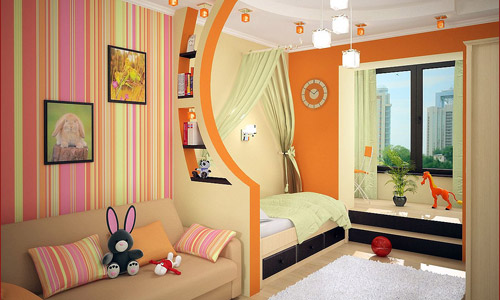
The room is divided into two parts using wallpaper.
Accent wall
This wall can be called one of the simplest techniques in combining wallpaper. Usually a room has only one such wall, although sometimes it can happen that you have to accentuate 2 adjacent or opposite walls. And one won’t be surprised that such a wall will have a cardinal difference from other walls. It, as an option, may differ in color saturation, patterns, etc. But in any case, the overall shade can be considered an overlapping element in this method.
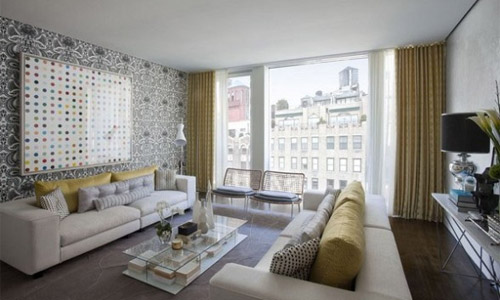
A separate wall highlighted by wallpaper. Photo - beinteriordecorator.com
Focus point
The focus point from the accent wall is different in that it is not in the entire wall, but is located in any one part of the wall. Those. with the help of wallpaper with a different shade, you can select any zone where there is a fireplace, an old sideboard, paintings hang, a bed stands, etc.
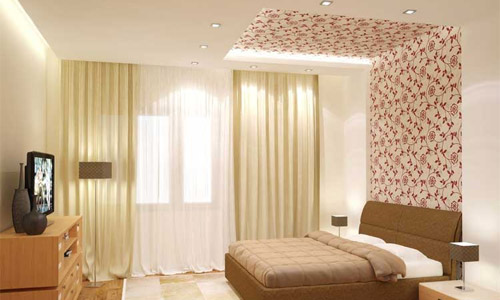
Part of the wall by the bed highlighted by wallpaper.
Wallpaper Combination Techniques
In the process of choosing wallpaper combinations, you need to remember about some similar element, which may be the same style of the picture or ornament, similar geometry of the picture, shades of the same color, etc.
Monophonic wallpaper of the same color, having different shades
This technique is suitable for those who like monotony in the interior. This approach involves gluing one or more walls with a rich shade of wallpaper. Quite often there is a combination of blue, beige, gray colors and their shades.
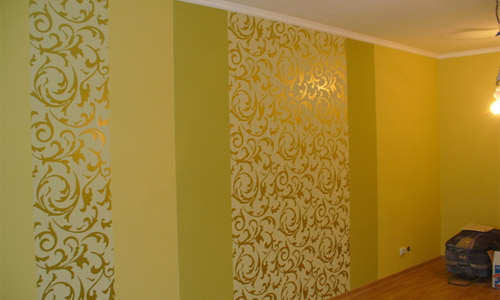
Plain wallpaper of different colors combined both among themselves and with patterned wallpaper.
Combine patterned wallpaper with plain
If it’s “itching your hands” and pasting the walls with large panels, it will be much better if other walls in the room are pasted with plain wallpaper. Exactly the same method is applied if there are geometric patterns on the wallpaper with large flowers or patterns.
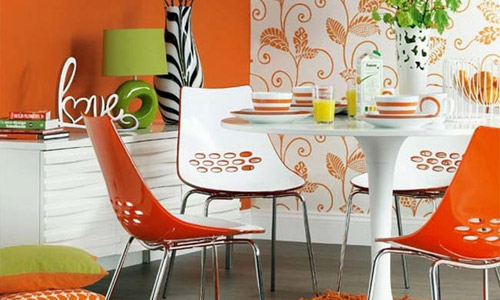
Patterned wallpaper combined with plain.
Combination of wallpapers with different patterns
A long tradition has been the use of a combination of wallpaper with vertical stripes and wallpaper with floral patterns. True, all of them must be correctly combined with the wallpaper in similar color shades. Such a floral ornament can be perfectly combined with patterns of "wood" themes. Cubes, stripes and various geometric shapes combine well with abstraction patterns. True, this method is considered dangerous, so you need to use it with extreme caution and try to carefully select the patterns.
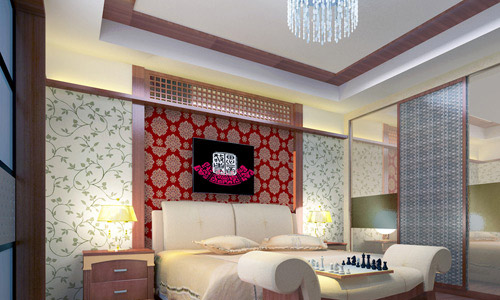
The combination of wallpaper with different patterns and different colors.
The combination of wallpaper with different colors
Here we must remember that neutral colors must be combined with more active ones. Although, if you create a bright and youthful interior, then here you can do your best to experiment with the contrast of colors. Using this technique will be very suitable when dividing the room into zones.
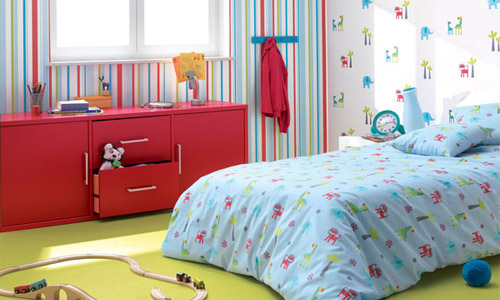
The combination of white wallpaper with patterns with striped wallpaper.
Wallpaper Combination Methods
Vertical stripes
In this case, you need to purchase a wallpaper with the same texture and width. But their color should be different. Strips of such wallpaper should be glued through 1 or 2. In this regard, the method of applying wallpaper with close shades (monochrome) or using wallpaper with different colors (contrast) is usually used.
The 1st option provides that horizontally applied stripes will create a very interesting play of light and shadow on the wall. The 2nd option implies that the walls will not only create a background for the room, but also be its main emphasis, which will create a general mood in the room.
You can try to stick such wallpapers that have a different pattern. For example, apply the alternation of wallpaper in a flower and a strip. However, this solution is not suitable for all interiors, but only for those that are decorated in retro style.
Sheets of wallpaper can dock with each other in different ways. You can use the traditional butt-to-overlap method, or try to dock with a zigzag or wave. Although, to be honest, the “undulating” docking is a work only for experienced and newcomers can’t cope with it.
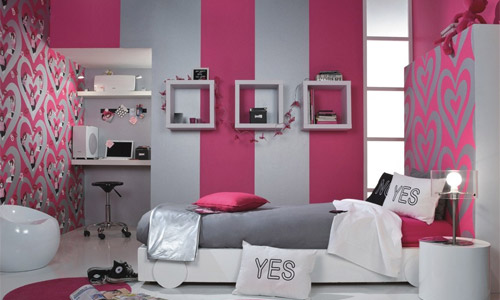
Wallpaper of different colors forming vertical lines.
Photo - decorwallcovering.com
Horizontal division
Wallpapering the walls horizontally becomes fashionable. And this technique is used in the design of almost all rooms, regardless of their style. A combination of cork or wood panels with wallpaper and subsequent painting is often carried out. True, in recent years, the division of walls in the horizontal direction has been applied, moreover, exclusively using wallpaper.And here you can use a combination of both contrasting wallpapers and similar to each other in shades. It is also good to use a different texture of wallpaper. This is when, for example, the lower part of the walls is glued with vinyl wallpaper for plaster, and the upper part - with textile.
With this method of zoning or separation, one should not forget that joints must be emphasized with special borders. As such a border, a paper border, as well as slats made of wood or PVC, skirting boards for ceilings, etc., are quite suitable. In any case, everything will depend on how thick the wallpaper is. If it is the same, then a paper border will do. If it is different, then other species should be tried. For a border made of paper will be bad in this regard to hide the joints.
But here questions arise regarding the proper horizontal separation of walls, as well as the height of the wallpaper joint? The answers depend on many factors, which include the ceiling height. On average, the lower half horizontally should have a height of no more than 1 m. Although, this will be true only if the room has low ceilings. With high ceilings, this separation between the wallpaper should be higher. Maximum - 1.5-2 meters from the floor.
It is very important to remember that the distance at which the wallpaper will dock should be measured from the floor, but not from the ceiling. Otherwise, the unevenness of the wallpaper joint with respect to the floor can be very noticeable. And this is ugly.
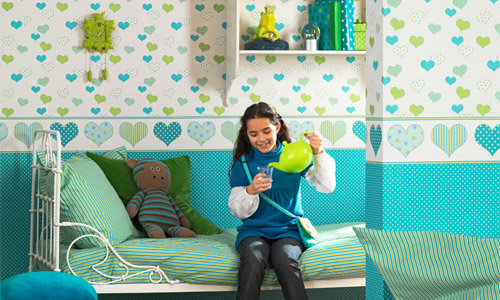
Wallpaper combined in horizontal directions.
Photo - kindertapeten.de
Wallpaper inserts in different sizes
You can initially paint the walls with paint, or paste wallpaper on them, and after this primary finish is finished, paste inserts cut from those wallpapers that are thicker. If desired or for beauty, it is recommended to decorate such inserts with moldings. Designing walls in this way will be appropriate for those rooms whose interior is decorated in a classic style, in the Rococo and Baroque style. It is desirable that such inserts be curly. They can be obtained simply by cutting from those wallpapers that have a large-sized ornament.
You can also try to paste the room walls with different wallpapers, which allows you to sharply highlight the areas in the room. For example, the wall behind the TV is recommended to be pasted over with such wallpaper that will sharply contrast the wallpaper on other walls. Although, you can even select not the entire wall, but a certain part of it.
With this combination of wallpaper in different colors, patterns and shades, you can zoning any room. At the same time, each of the family members will “get” his zone, in which he will be comfortable. However, one must be able to arrange the furniture correctly.
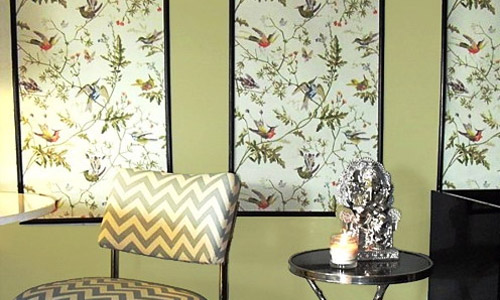
Wallpaper inserts framed by moldings and located on a painted wall.
Flap combining
To perform such a combination, it is necessary to choose such wallpapers that will fit very well with each other. Then the wallpaper should be cut into pieces of the required length and glued butt or lap, randomly or orderly - as you like. These pieces can even be glued to the wall, like a checkerboard, or otherwise, as the fantasy suggests.
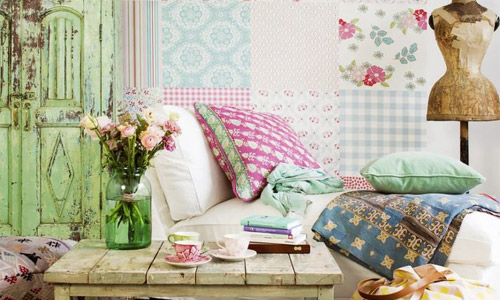
Combination with wallpaper flaps.
Select niches and protrusions
If the room has niches or protruding parts, then at first glance this may seem like a flaw, although in fact it is not. And you don’t even have to try to hide or disguise these places - all the same, nothing will work. But you can select them from the general space of the room. But for this they will have to be pasted over with wallpaper of contrasting colors.
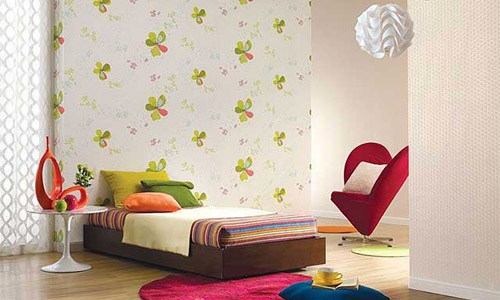
The protrusion highlighted by the wallpaper.
Useful Tips
1. In the process of choosing wallpapers for combination, it is advisable to wear that piece of wallpaper to which you want to pick up a couple of failures. Although, it is best to compare rolled rolls of suitable colors. This is the only way to understand whether these wallpapers will be combined with each other or not.
2. With vertical combination, it is necessary to use wallpaper of only the same thickness, because different thickness of the wallpaper will be visible in clearly visible seams.
3. Do not forget to try to simultaneously "kill 2 birds with one stone." Those. combine wallpaper and at the same time visually correct the imperfections of the room. The room will seem higher if you stick or combine wallpaper in the form of different stripes. In too high rooms, horizontal division can be applied and, thereby, visually slightly reduce its height.
Video: Varieties of wallpaper drawings

